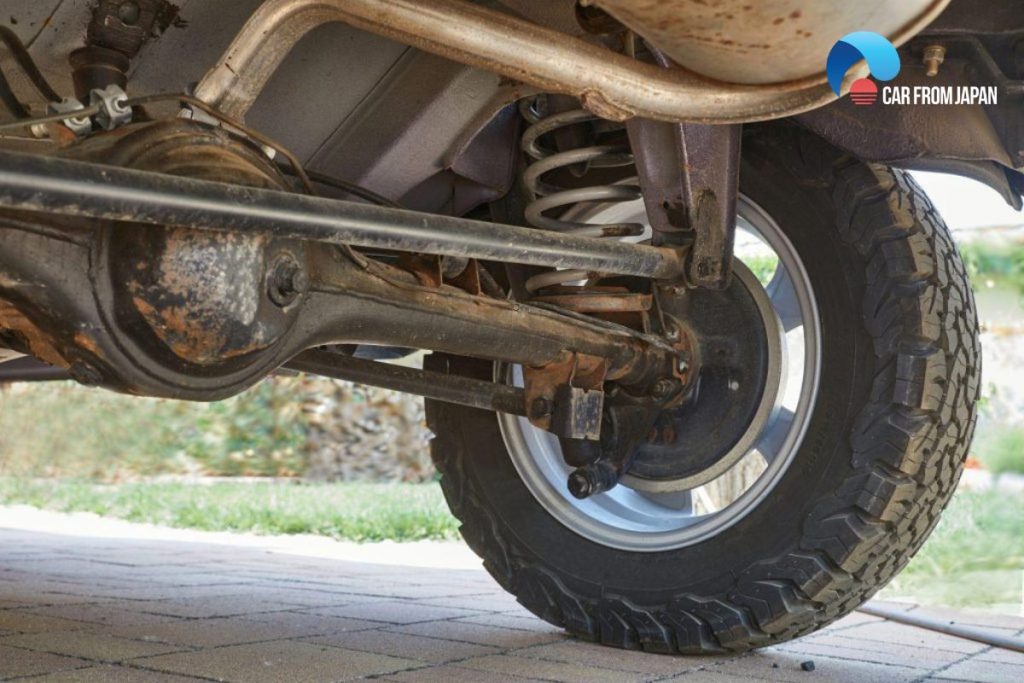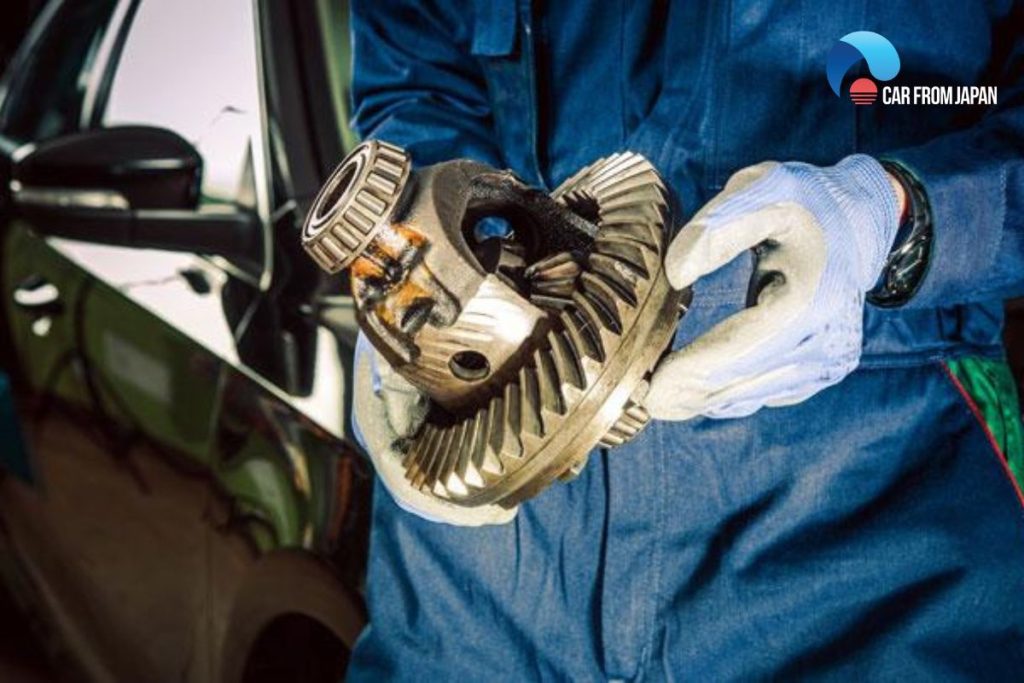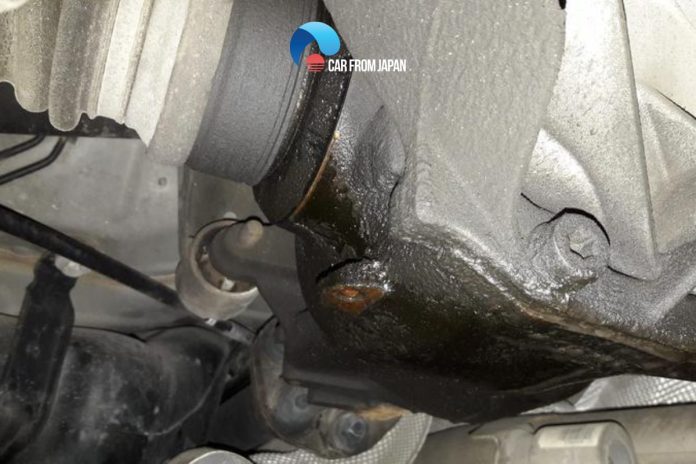A differential is a component found in the drivetrain of SUVs and heavy-duty vehicles. Whether the vehicle is a rear-wheel or all-wheel drive, finding leaked fluid in the rear indicates a differential leak. The fluid looks like motor oil but has a distinct smell.
What should you do if such a problem occurs? Do you know about the ideal differential stop leak measures?
Contents
- What Does The Rear Differential Do?
- How To Repair The Differential Leak?
- FAQs on Differential Leak
- Why does my differential only leak when driving, but not when parked?
- Why does my new differential gasket still leak after replacement?
- Why does my differential fluid leak look like engine or transmission oil?
- Does towing or hauling heavy loads make a leak worse?
- Why does my differential leak right after a fluid change?
- Is it safe to keep driving with a small differential leak?
- Final Thoughts
What Does The Rear Differential Do?
A differential is a gear train featuring three shafts. This component connects to the transmission or transfer case through the driveshaft, transmitting the engine’s power to the wheels.
The main function of a differential is to help the vehicle maintain balance during a turn. The wheels have the same speed when the car is moving on a straight road, so it does not affect balance and stability.
When the car turns a corner, each wheel will have its speed to ensure traction. Accordingly, the wheel on the outside of the corner will have a faster speed than the remaining wheels.
At this time, without a differential, the wheels will lock together, leading to an extremely dangerous situation of spinning. It enables the outside wheels to rotate quicker than the inner wheels when the vehicle is taking a turn.
The average rotational speed does not fluctuate as the increase in one wheel’s speed is balanced by a reduction of the speed in the other.
Simply speaking, the differential helps your vehicle move in balance and stability. In addition, it also contributes to increasing traction for the vehicle to overcome obstacles, especially limiting wheel slippage when going through mud.

How To Repair The Differential Leak?
How do you realize that there is a leak in the differential? You will find grayish or light brown oil under the backside of your vehicle.
Do you know the culprit of this problem? The reason can be that the cap gasket or spark plug gasket is one of the main causes of differential leaks in cars.
Specifically, the rubber gasket’s incorrect size prevents a proper seal, leading to oil leakage from engine overheating under pressure, which eventually hardens and shrinks the gaskets.
The leak could be on the rear differential cover, the axle seals, or the pinion seal. How to stop it and bring the vehicle to normal running condition?
Rear differential leak sealer
The easiest and hassle-free option to fix the issue. Instead of spending your time finding the leak source, add some sealer to the differential fluid through the oil fill plug.
There are several high-quality leak sealer products in the market. It will repair the leak and restore the seal to the previous condition while you drive.
See More: Working Mechanism of a Differential
Replacing the cover
If the cover is leaking or showing deterioration due to regular wear and tear, changing it will bring the differential to the previous condition.
The cover is made of either rubber or silicone and replacing it is quite easy. Just don’t forget to clean the sealing surface before resealing the new one.
Resealing the sides
This is the way to rear differential stop leak when the fluid drips onto the rear brakes. The task is time-consuming because you have to remove the axle shafts.
Then, you have to take the damaged seals out and install the new ones. Put together the shafts to finish the task.

Replacing the pinion seal
Another differential leak could be at the pinion seal. There is a yoke at the front side of the differential, and the surrounding seal can wear out over time.
To replace the seal, you have to dislodge the yoke and pry out the seal. After that, place a new seal and then attach the yoke to its components.
Sometimes, the problems could be bigger than just a tiny leak. In that case, you may have to replace the whole differential with a new one. You should consult a mechanic if it comes to that point.
FAQs on Differential Leak
Why does my differential only leak when driving, but not when parked?
Because rotation builds pressure inside the housing. If the vent is clogged, pressure forces oil out past seals or gaskets only while the car is in motion.
Why does my new differential gasket still leak after replacement?
The cover may be warped or the mating surfaces not properly cleaned. Even small scratches or leftover RTV sealant can prevent a good seal.
Why does my differential fluid leak look like engine or transmission oil?
Gear oil has a distinct sulfur-like smell and thicker texture. Misidentifying it can lead to the wrong repairs, always confirm the fluid type first.
Does towing or hauling heavy loads make a leak worse?
Definitely. Heavier loads raise internal temps and pressure, which magnify existing seal weaknesses and accelerate fluid loss.
Why does my differential leak right after a fluid change?
Fresh gear oil may clean away sludge that was “plugging” old leaks, exposing weak seals that now start dripping.
Is it safe to keep driving with a small differential leak?
Only for a short time. Differentials rely on oil for lubrication.
Even a slow leak can eventually starve the gears and bearings, leading to catastrophic failure.
Watch this video from Fielding Shredder to learn how to fix your differential for under $5!
Final Thoughts
A differential leak can be caused by several factors, including worn seals, damaged gaskets, or excessive fluid pressure.
It is essential to address a leak promptly to prevent further damage to the vehicle’s drivetrain and ensure safe and reliable operation.
We hope that the article will be somehow helpful for you. Don’t forget to follow our next post to learn more about the car maintenance tips!



